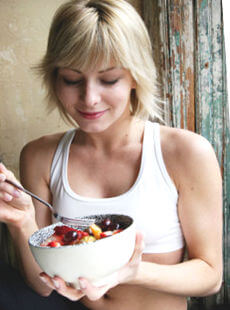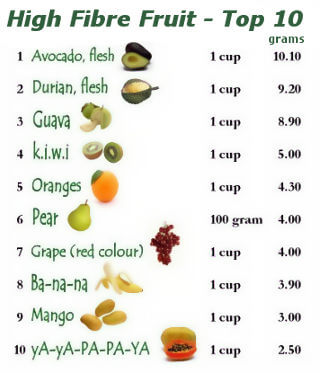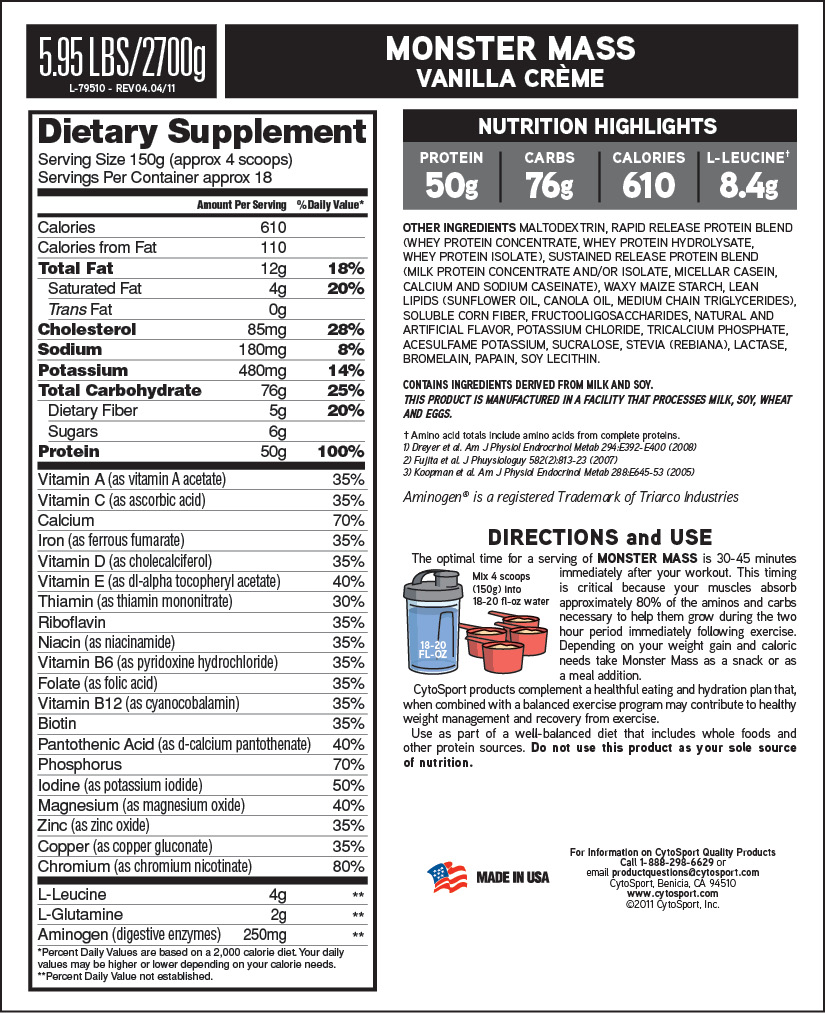Foods High In Protein & Fibre
 Most of us don’t get enough fibre (or ‘roughage’ as my grandmother used to call it) in our diets. Typically we eat around 10 grams of fibre a day when the optimum amount is between 30 and 40 grams of daily dietary fibre.
Most of us don’t get enough fibre (or ‘roughage’ as my grandmother used to call it) in our diets. Typically we eat around 10 grams of fibre a day when the optimum amount is between 30 and 40 grams of daily dietary fibre.
We also tend to eat a lot of red meat, which, while being protein-rich, often contains a lot of unhealthy saturated fat. So maybe it’s time to take another look at your diet and make some improvements for your overall health.
Why Do We Need Fibre?
Let’s put it this way, if you are regularly constipated, you are not getting enough fibre in your diet. If you continue with a diet which is low in fibre, then you could be at risk of contracting colon cancer or other problems with your digestive tract. You might also become a victim of piles (haemorrhoids). You might also suffer from high blood pressure, obesity (because your body is not expelling waste as it should) and diabetes.
That’s got to be enough reason for anybody 🙂
What About Protein?
Protein is one of the basic building blocks of our body. Hair, muscle, connective tissue and skin are made up of protein. It plays a crucial role in all of our cells and most body fluids. DNA, neurotransmitters (which convey messages to and from the brain) hormones and enzymes all consist of protein.
Our bodies can recycle protein, but as we are constantly using it, we need to eat food containing protein to replenish our supply. Protein is made up of smaller blocks of material called amino acids. There are 18 currently identified, half of which cannot be manufactured by our bodies, so we need to eat foods that have a good amount of these in them.
Animal protein from meat, fish, poultry, eggs and dairy products are good sources of protein and these amino acids. As are legumes (beans), leafy greens such as spinach and broccoli, and fruit. And don’t forget your nuts and seeds too.
How Much Protein Do I Need Every Day?
There’s no one-size-fits-all as far as protein goes; you have to calculate how much of it is enough for you. So, first of all you need to know your body weight. If you are measuring it in kilos multiply it by 0.8, or if you are using pounds (lbs) multiply the total by 0.37. This will give you a starting point that tells you roughly how many grams per day your body requires.
However, the amount of protein you need also depends on your age, size and the type of exercise you do.
For example, a long distance runner needs about 1.2 to 1.4 grams of protein per kilo of body weight.
But if you are into strength training, as many readers here will be, then there is some really solid evidence from studies that the RDA amount of 0.8 above is nowhere near enough – it will actually slow down your rate of muscle growth. Studies have shown our intake should be more in the range of 1.5 to 1.8 grams of protein per kilo of body weight.
If you’ve ever felt you are working hard at the gym but not seeing the gains you used to, you may need to look again at your protein intake. Remember, these figures are per kilo of body weight – when did you last weigh yourself and do the calculation? Your requirement could have significantly increased.
So Which Foods Should I Eat?
If you are a body builder or do strength training then there is nothing greatly wrong with steaks and red meat. Just don’t go crazy and rely on them alone. And trim any obvious lumps of fat off meat as this can raise cholesterol levels.
The phrase ‘everything in moderation’ is a really useful one to remember. You need to get your fibre and protein from lots of different sources, not just one main one. So whole grains, nuts and seeds, eggs and other dairy, legumes and beans, fresh fruit and vegetables. And not just lean chicken breast but other types of poultry, meats and fish too.
You Mean I Have To Eat Rabbit Food..?
Not unless you happen to know rabbits that eat like kings :-). But it would be wise to avoid all highly refined and processed foods,
Typically I find breakfast is the meal that confuses a lot of people. Definitely get rid of sugar-filled highly processed breakfast cereals if you haven’t already. I know some people find the prospect of muesli soul destroying – so if that’s you, think eggs, oats, beans (watch out for high sugar sauces) instead.
Eggs had a bad reputation for many years, but this was really due to bad science reporting the media. The studies did show that eggs were high in cholesterol, but they also showed that eggs not only improve your good cholesterol levels (HDL) but they also convert the bad (LDL) to a safer form! In healthy people there is nothing connecting eating eggs with heart disease – it’s a media myth. So a couple of poached eggs on toast for breakfast is actually a powerhouse of a breakfast. Or how about a breakfast burrito with scrambled eggs, black beans and cheese.
Porridge made from oats can be a really satisfying alternative particularly in cold weather. Don’t bother with branded processed “porridge” products which are more expensive and may even have added sugar and other additives – just buy cheap rolled oats, it’s the same thing without the additives! Then you can add a scoop of protein powder to ramp up the protein level (yes, chocolate protein powder porridge does taste great in the morning). You can also add some crushed nuts, a touch of honey, cinnamon, grate a fresh apple – whatever makes it taste great for you. Incidentally, oats have also been shown to lower blood pressure, making them a useful inclusion for a breakfast or two each week.
And yes, home made muesli can be great. No, really! If you make your own, you can tailor it to what you like to eat. I find simple rolled oats make the best base. Then try to use fresh rather than dried fruits if you can. Consider adding protein powder to meet your daily requirement. Add nuts and seeds that you like. Almonds, walnuts, flax seeds and pumpkin seeds (yes, even those from a fresh pumpkins – don’t throw them away, dry them in the sun or in the oven on a tray using a very low heat). These are packed with protein, fibre and essential Omega-3 fatty acids too which we really need to include more of in our diets. Often people don’t like muesli because they find it ‘dry’ – but that just means you aren’t putting enough liquid on it! You can use water, milk (or rice/almond milk) or even natural yoghurt. You can also add extras for flavor if you like – raw cacao, dried coconut, honey etc – just go easy on anything sweet.
If you’re still struggling, need something ‘on the go’ or just more variety, then yes, you can have muffins for breakfast too. Try this high protein muffin recipe – it tastes even better than a sugar heavy processed muffin in my opinion.
Or another quick grab and go breakfast option, go for a protein shake (here’s some tasty recipes for shakes without protein powder).
Now For The ‘Rabbit’ Food
Fresh leafy greens supply our bodies with fibre, protein and numerous other nutrients. If you are one of those people who hate greens, then try broccoli and spinach with whole grain pasta in a cheese sauce. You can have pancetta that has been well cooked on top of it along with as much parmesan (or other grated cheese) as you could wish for. Experiment with fresh herbs and spices, as these are good for our health too.
A crunchy red and white cabbage salad with grated carrots, pine nuts and sultanas which have been soaked in lemon juice is very good as a side salad, or as a starter, especially if you pour olive oil over it, and perhaps add a little wine vinegar.
Salads don’t have to be boring, but, although you may not appreciate them, many green vegetables are some of the so-called superfoods.
Winter squash are also an excellent sources of fibre, protein and other essential vitamins and minerals, as well as bioflavonoids and amino acids.
If you still really struggle with vegetables, then test out some vegetable based smoothie recipes. Sure, you won’t like every combination, but they really do taste great when you find the ones you like. And note, I said ‘smoothies’ and NOT juices. When you extract just the juice you leave a lot of the good stuff behind, and typically end up with something sweet without the fibre that helps your body absorb that sweetness without great big insulin spikes.
And Of Course, The Fruit
Avocados are the fruit superfood, with Omega-3 fatty acid, protein, fibre and a whole lot more. Then you could try some kiwi fruit, but peel it first. Apples are good too, washed but not peeled, and citrus fruits such as oranges, grapefruit, pommelos, mandarins and others are very good sources of fibre and protein as well as being rich in vitamin C which boosts the immune system, and can help ward off colds and flu, among other ailments.

These fruits also have potent antioxidant properties, and so help combat the free-radicals that roam around out bodies, attacking healthy cells and causing cancer. Of course that popular lovingly processed product of the grape – red wine – also has potent antioxidant qualities, but you should drink this only in moderation. The experts are still arguing about it, but many agree that one glass of red wine a day may offer numerous benefits.
The healthier your diet, the less risk you have of developing serious illnesses such as cancer, heart diseases and osteoporosis, to name but a few of those diseases we all dread. So it’s always worth looking again at your diet, seeing what could be improved and trying to introduce more variety and even flavor into your daily food. The more you learn about food preparation and cooking, the easier it becomes to eat healthier and just to enjoy the whole experience of flavor and eating.
If you have any suggestions, comments or recipes you would like to share, just add a comment below.
References
Lemon, Peter WR. “Protein metabolism during exercise.” Exercise and Sport Science (2000): 19-27.
Tarnopolsky, M. A., et al. “Evaluation of protein requirements for trained strength athletes.” Journal of Applied Physiology 73.5 (1992): 1986-1995.
Lemon, P. W., et al. “Protein requirements and muscle mass/strength changes during intensive training in novice bodybuilders.” Journal of Applied Physiology 73.2 (1992): 767-775.
Friedman, J. E., and P. W. Lemon. “Effect of chronic endurance exercise on retention of dietary protein.” International journal of sports medicine 10.2 (1989): 118-123.
Evans, W. J., et al. “Protein metabolism and endurance exercise.” Physician Sports Med 11 (1983): 63-72.
Fernandez, Maria Luz. “Dietary cholesterol provided by eggs and plasma lipoproteins in healthy populations.” Current Opinion in Clinical Nutrition & Metabolic Care 9.1 (2006): 8-12.
Rong, Ying, et al. “Egg consumption and risk of coronary heart disease and stroke: dose-response meta-analysis of prospective cohort studies.” (2013): e8539.





